Previous
 1
2
3
4
5
6
7
8
1
2
3
4
5
6
7
8
 Next
Next
Colorado & Southern #9
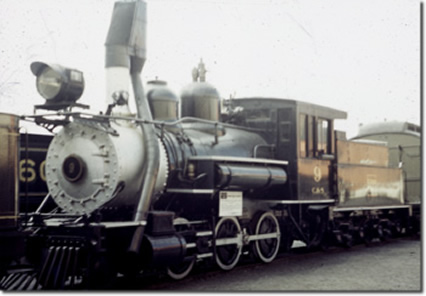
Dudgeon-Steam_Wagon
The 1866 Dudgeon steam wagon is one of the earliest self-propelled road vehicles built in America. It resembles a small locomotive, but it has a steering apparatus and seats for a driver and eight passengers. Richard Dudgeon, a machinist who became known for his commercially-produced hydraulic jacks, designed and built the steam wagon because he wished to end the abuse and mistreatment of horses. He drove it on New York City streets and at his farm on Long Island. The steam wagon burned coal and ran at a top speed of 25-30 miles per hour. Dudgeon didn't patent the vehicle or build it in quantities, but he advertised his machine shop as a "maker and patentee of hydraulic jacks, punches, roller tube-expanders, direct-acting steam hammers, and steam carriages for good hard roads."
The preceeding text is from America on the Move web site
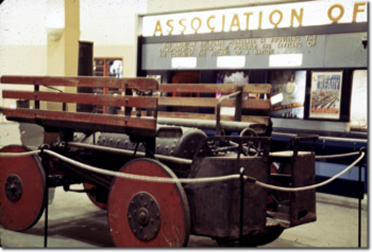
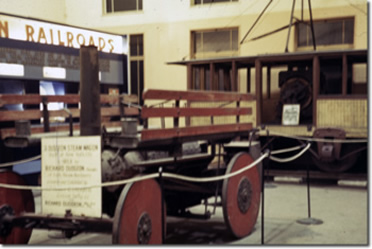
Ansonia Derby & Birmingham 'Derby'
Photo wf-307r
Ansonia Derby & Birmingham 'Derby'
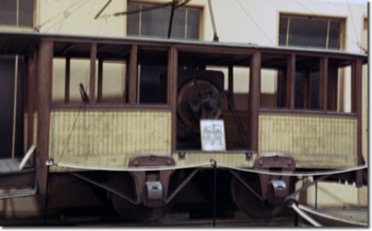
Photo wf-305r
From Chris Barkan
"Photo of the Ansonia Derby & Birmingham 'Derby,' the oldest surviving (US) electric locomotive and the only Van De Poele motor preserved." As such it is a highly significant piece. The good news is that it is preserved at the Shore Line Trolley Museum in Branford, CT."
Links from Chris for more information and photos:
Shore Line Trolley Museum - Wikipedia
Derby Street Railway - www.bera.org
Photo - "Derby Locomotive" - www.davesrailpix.com
Ross Winans "Camel" No. 217
"Camel" No. 217, an original locomotive built by the Baltimore & Ohio's Mount Clare Shops in 1883. Designed by J. C. Davis, the "camel" owes its humped design to the need to place the cab over the boiler because of the large firebox. The fireman had to do his work from the unsheltered rear of the locomotive. The "camelback" locomotive was similarly constructed, except that the engineer's cab occupied only the middle part of the boiler. Camelbacks were used principally, though not exclusively, by some eastern railroads, and a few locomotives of that type operated almost to the end of the steam era in commuter service on the Central Railroad of New Jersey.
(From www.railarchive.net/centprog/r_winans.htm
Century of Progress, Chicago 1933-1934 Railroad exhibits.)
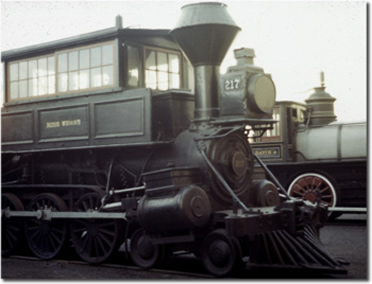
Mount Washington Cog Railway
Peppersass
Built by Campbell, Whittier and Co. in 1866, it was world's first cog locomotive, originally named Hero. Last operated in 1929, and is now on display at Marshfield Station.
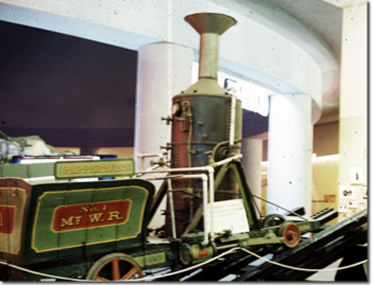
More information at Wikipedia
John Bull
1939: The original John Bull is displayed in the opening of the New York World's Fair
1940: A replica of the John Bull, built by engineers at the Pennsylvania Railroad's Juniata Shops in Altoona, Pennsylvania, is displayed at the New York World's Fair, and the original is returned to the Smithsonian.
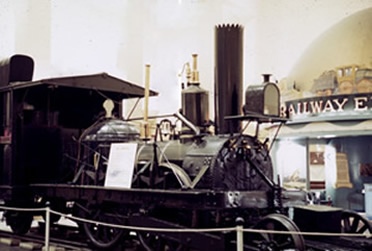
Society - Photo wf-301r
More information at Wikipedia
Previous
 1
2
3
4
5
6
7
8
1
2
3
4
5
6
7
8
 Next
Next
- Return to:
- Railroads
- Transportation
